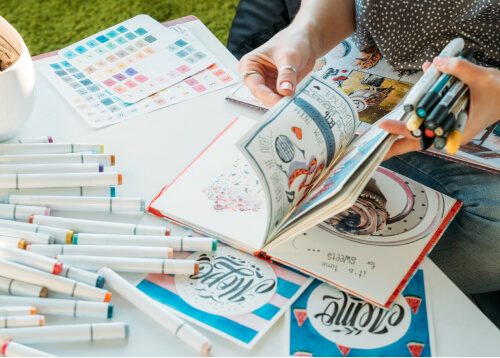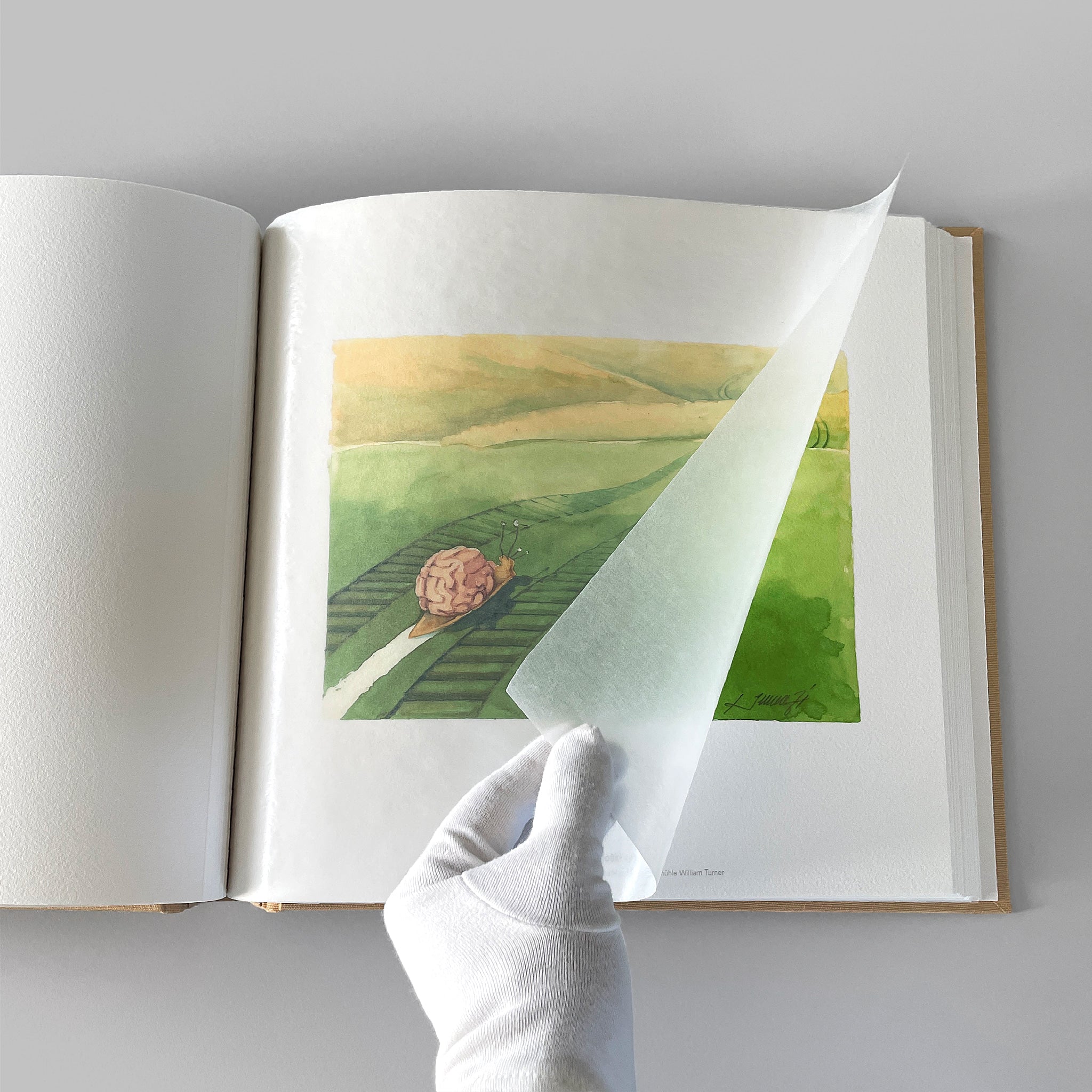The Ultimate Checklist for Printing a Successful art book
Discover the Vital Overview to Art Book Printing for Aspiring Artists and Publishers
As a hopeful musician or publisher, understanding the nuances of art book printing is important to bringing your vision to life. What are the key elements you should focus on to produce a magnificent art book that really represents your job?
Understanding Different Sorts Of Art Books
When you plunge into the world of art books, you'll quickly find that they can be found in various forms, each customized to different imaginative expressions and audiences. Coffee table publications often display magnificent visuals, excellent for casual browsing, while essays dive deep right into a specific musician's job, offering context and understandings. If you have an interest in specific art motions, exhibition brochures supply comprehensive documents of programs, featuring essays and reviews.
For training purposes, art guidebooks and technique books direct you via numerous mediums and styles, making them essential for aspiring artists. Each layout serves its objective, and recognizing their distinctions can boost your art book journey.
Selecting the Right Paper and Products
Choosing the ideal paper and products can significantly influence the total high quality and feel of your art book. Beginning by thinking about the kind of art work you have. For lively shades and elaborate details, go with a glossy surface or a heavyweight matte paper that boosts visual depth. If your job includes softer tones or textures, an all-natural or uncoated paper can provide a warm, welcoming touch.
Consider the weight of the paper, as well. Thicker options frequently provide an even more specialist look, while lighter documents can lower printing expenses. Do not forget the binding materials; a durable cover can secure your pages and contribute to guide's aesthetic.
Finally, consider sustainability. Eco-friendly choices are obtaining appeal and can mirror your values as a musician. By meticulously selecting your paper and products, you'll guarantee that your art book not only looks great but likewise really feels unique in the hands of your viewers.

Picking the most effective Printing Techniques
When it involves publishing your art book, choosing in between offset and electronic printing can considerably affect your final item. You'll also wish to take into account exactly how paper high quality affects the total feel and look of your artwork. Let's discover these key printing techniques to discover the most effective suitable for your project.
Balanced Out vs. Digital Printing
While both balanced out and electronic printing have their advantages, selecting the right strategy for your art book can substantially affect the final item. Offset printing offers high-grade images and vibrant shades, making it ideal for larger print runs. Eventually, your selection needs to line up with your artistic vision and circulation technique, making sure that your art book reflects the top quality you prefer.
Paper High Quality Factors To Consider
Selecting the best paper quality can considerably enhance the aesthetic charm and responsive experience of your art book. For prints, a shiny surface can make photos pop, while a matte coating provides a softer, more subtle look.
Next, think of the sustainability of your choice. Green options are ending up being significantly prominent and can appeal to environmentally-conscious readers. Lastly, demand examples to see how different papers work with your art work, making sure the final product mirrors your vision completely.
Guaranteeing Color Accuracy in Your Prints
To attain stunning prints, you need to concentrate on shade precision from the beginning. You'll intend to utilize shade calibration techniques to validate your display and printer remain in sync. Furthermore, proofing your job prior to the last print run can assist capture any type of inconsistencies, ensuring your art looks equally as you imagined.
Shade Calibration Methods
Ensuring shade precision in your prints begins with effective color calibration strategies that aid preserve consistency between your electronic photos and last printed products. Initially, calibrate your display using equipment calibration tools to accomplish the best shade representation. This verifies that what you see on-screen suits what gets published. Next off, select a color account fit for your printing procedure, like CMYK for print materials. On a regular basis inspect your printer's settings and preserve it to stay clear of color changes. It's likewise necessary to utilize high-quality paper that matches your inks, as various surface areas can substantially affect color output. By continually applying these strategies, you'll enhance the total quality of your art prints and better convey your artistic vision.
Proofing for Precision
While you could believe your digital pictures await print, proofing is essential for accomplishing color accuracy. Prior to devoting to a full print run, always ask for an evidence from your printer. This allows you to see how shades translate from display to paper. Contrast the proof with your calibrated screen to identify any kind of disparities. Take notice of saturation, illumination, and hue, as these elements can significantly affect your end product.
If modifications are required, connect plainly with your printer about your wanted end results. Do not hesitate to demand numerous evidence if needed; it deserves the investment to obtain it right. Eventually, complete proofing guarantees that your artwork is represented as you visualized it, keeping your imaginative stability throughout the printing process.

Creating Layouts That Enhance Your Artwork
When you make formats for your art book, it's necessary to consider how each component communicates with your artwork. Go for a balance in between visuals and text, ensuring neither overshadows the other. Usage white space tactically; it offers your art work room to take a breath and accentuates its information.
Take into consideration the circulation of your book. Prepare images in a manner that overviews the visitor's eye, developing a narrative or thematic progression. art book. Differ the sizes and positionings of your art work to keep the format vibrant and fascinating
Select fonts that match your artwork without distracting from it. Maintain message concise and pertinent, supplying context or insight that boosts the customer's experience.
Ultimately, test various formats. Print examples to see how the layouts translate theoretically, and adjust as needed. By attentively designing your designs, you'll develop an aesthetically engaging art book that reverberates with your target market.
Binding Alternatives for a Specialist Finish
Picking the right binding alternative can considerably impact the total discussion of your art book. You'll wish to consider both visual appeals and durability when making your option. Popular options include perfect binding, which offers a sleek look and is perfect for thicker books; saddle sewing, ideal for smaller sized pamphlets; and spiral binding, which enables pages to lay level for easy viewing.
If you're intending for a costs feeling, case binding is an exceptional choice, providing a durable cover and an expert look (art book). Don't forget the cover material; alternatives like towel, leather, or a shiny finish can elevate your book's charm
Whatever option you select, make certain it matches your art work and enhances the viewers's experience. Take your time to consider the advantages and disadvantages of each approach, so your final item mirrors the high quality of your imaginative vision.
Preparing Your Apply For Print Preparedness
To assure your art book is print-ready, you'll need to pay attention to file prep work. Begin by establishing your paper size to match your wanted print measurements. Use high-resolution photos-- 300 DPI is the requirement-- to establish sharp, vivid visuals. Convert your files to CMYK setting, as this color room is ideal for printing. Do not fail to remember to consist of visit here hemorrhage areas, usually an added 0.125 inches around your web pages, to avoid any type of white sides after trimming.
Think about developing a proof to evaluate before the final print run. Adhering to these actions will certainly aid you attain a refined, professional art book.
Regularly Asked Concerns
What Is the Typical Cost of Printing an Art Book?
The average cost of printing an art book varies, however you can anticipate to pay anywhere from $5 to $20 per copy, depending upon aspects like dimension, paper quality, and printing volume.
Exactly How Can I Locate a Reliable Printing Business?
To discover a dependable printing business, begin by investigating online testimonials and asking other artists for suggestions. Contrast quotes, check portfolios, and interact your needs plainly to ensure they comprehend your vision and top quality expectations.
What Is the Regular Turn-around Time for Printing?
The common turn-around time for printing differs however usually ranges from one to four weeks. Aspects like task you can try these out complexity and quantity can influence this. Always verify with your picked printer for details timelines and expectations.
Can I Print My Art Book in Limited Quantities?
Yes, you can absolutely print your article art book in limited quantities. Several printing companies use short-run alternatives, allowing you to produce just the number you require, making it simpler to handle costs and inventory.
What Legal Considerations Should I Know for My Art Book?
You must take into consideration copyright, licensing agreements, and version launches when developing your art book. Make particular you deserve to use all pictures and text, shielding on your own from potential legal concerns in the future.